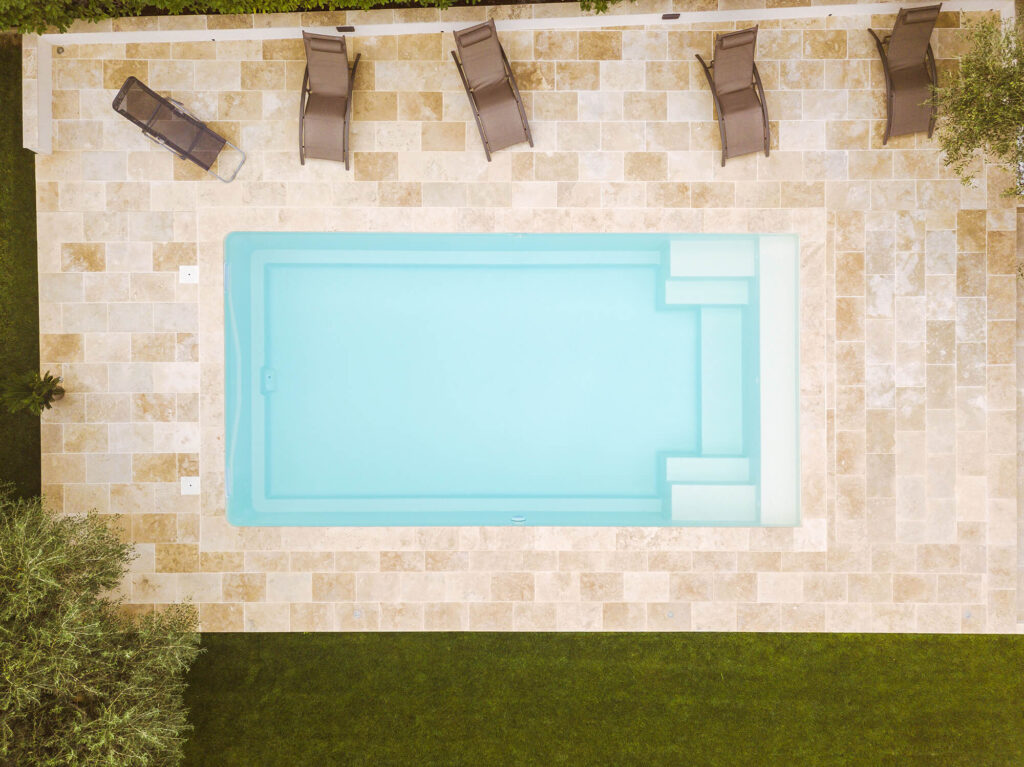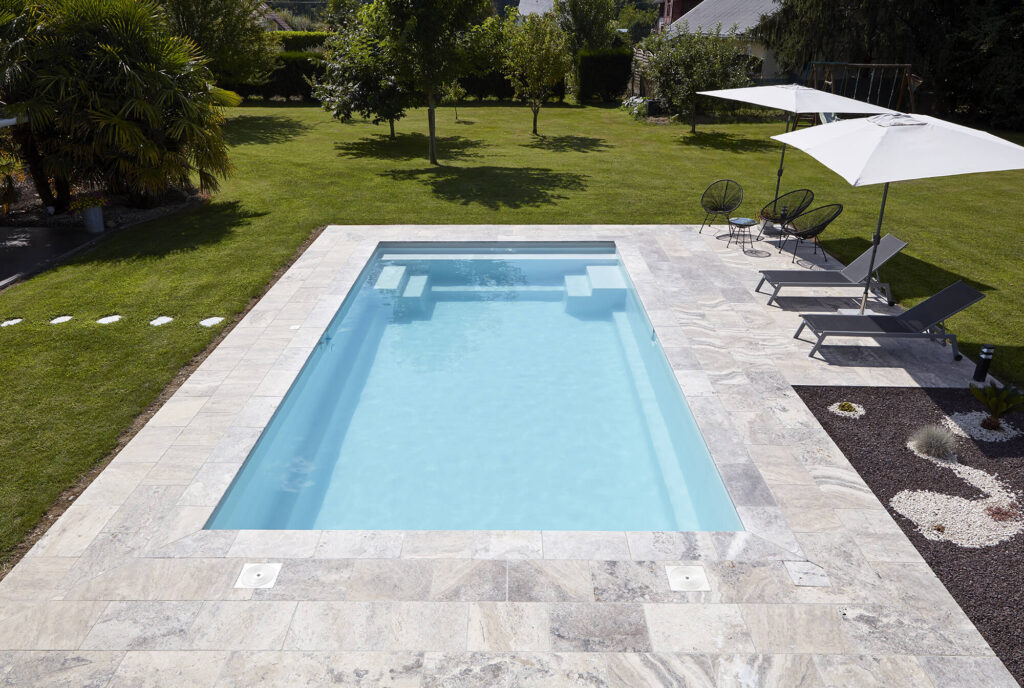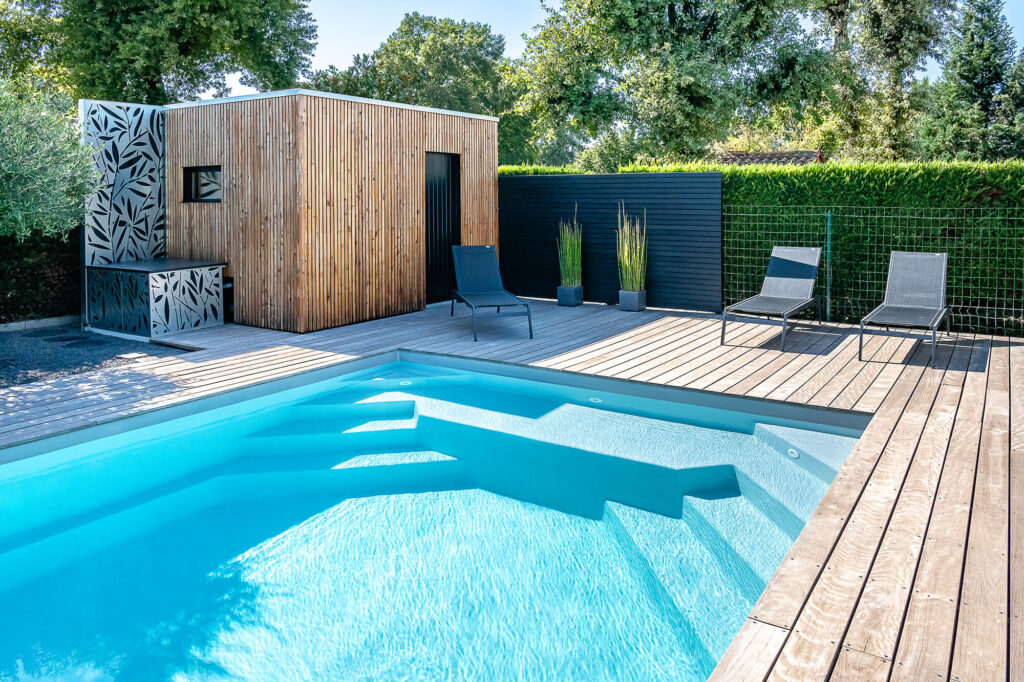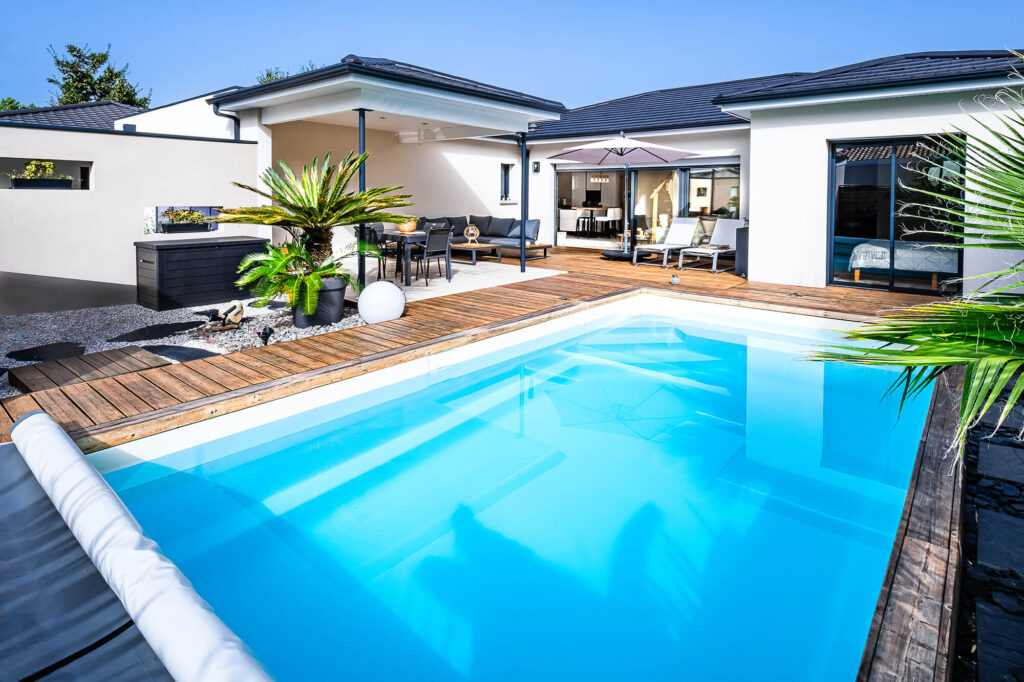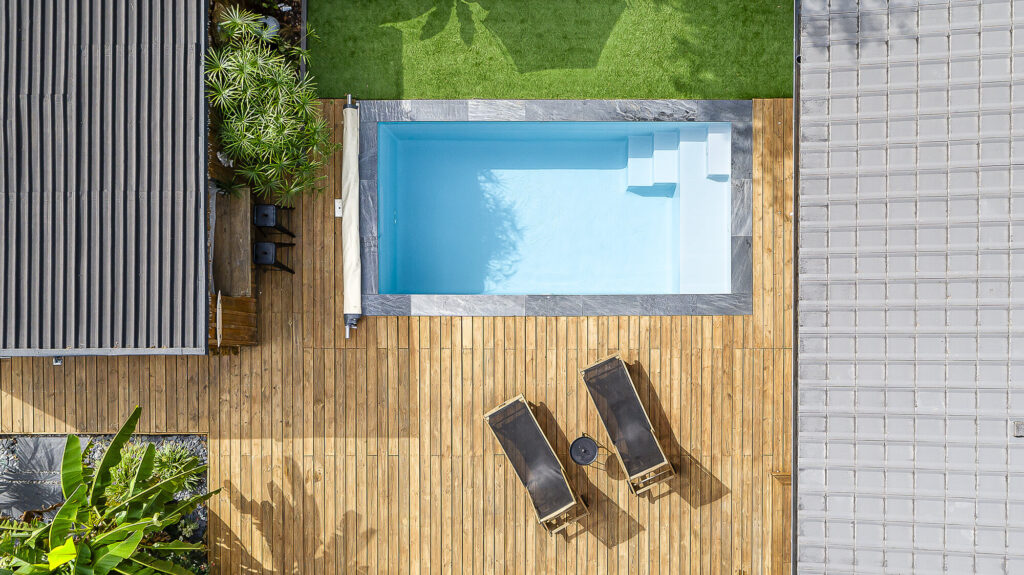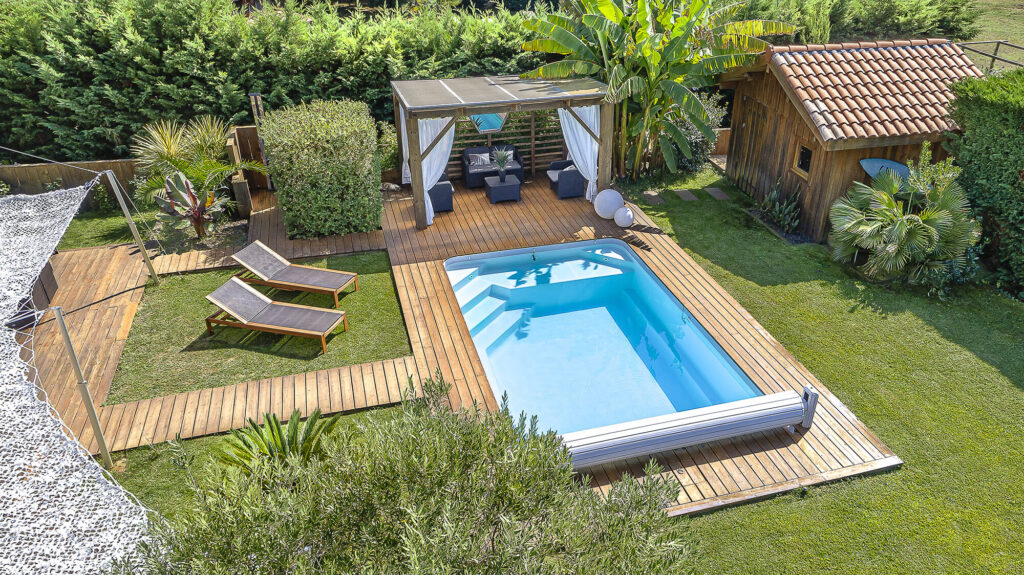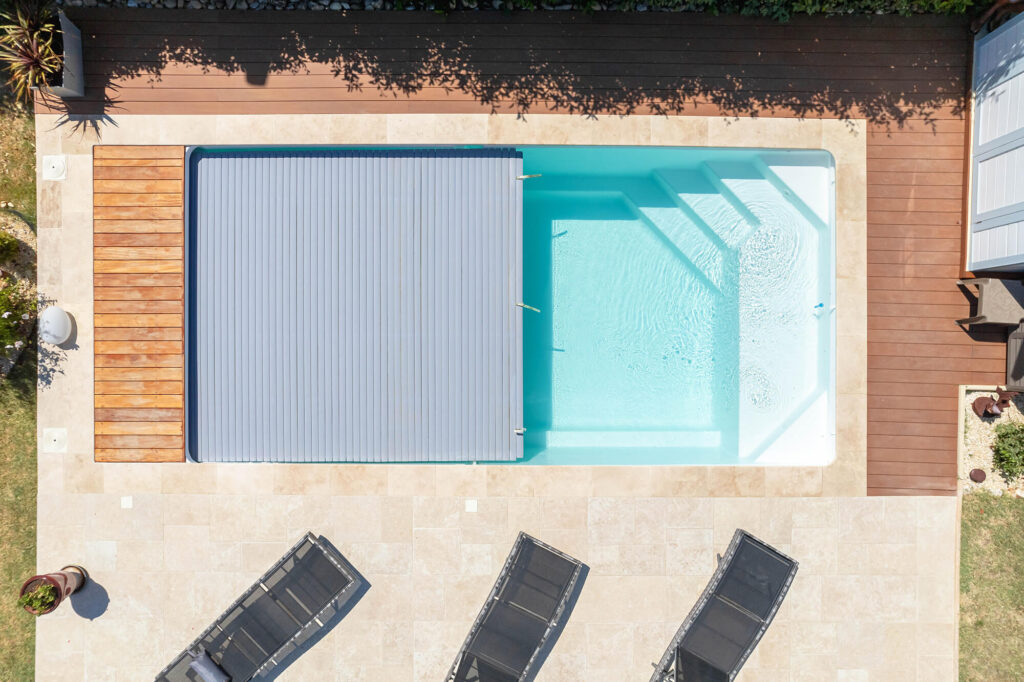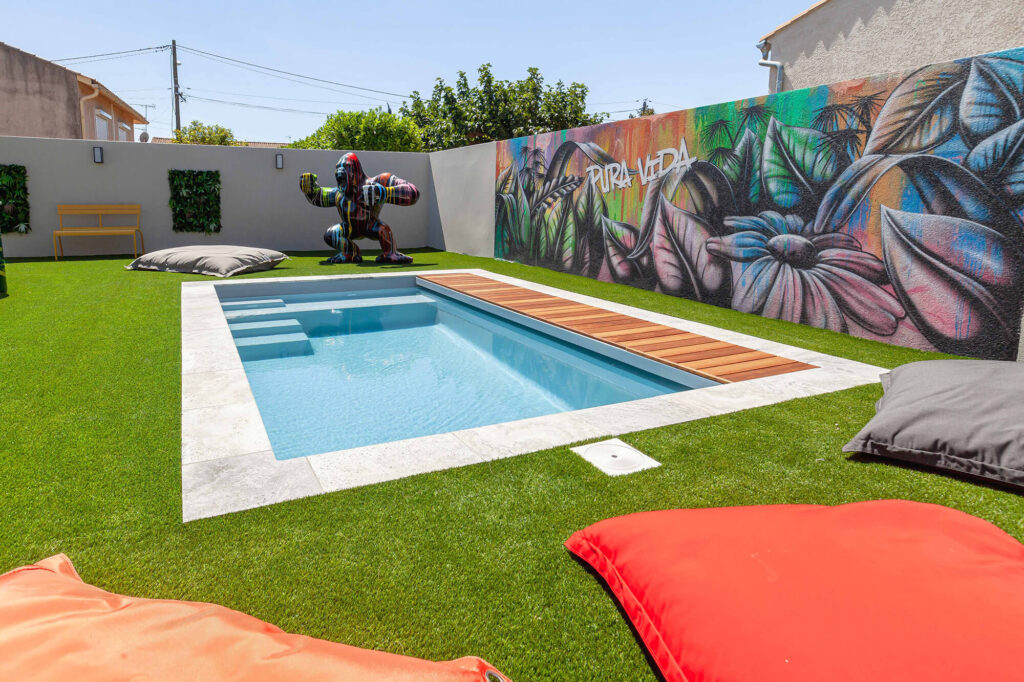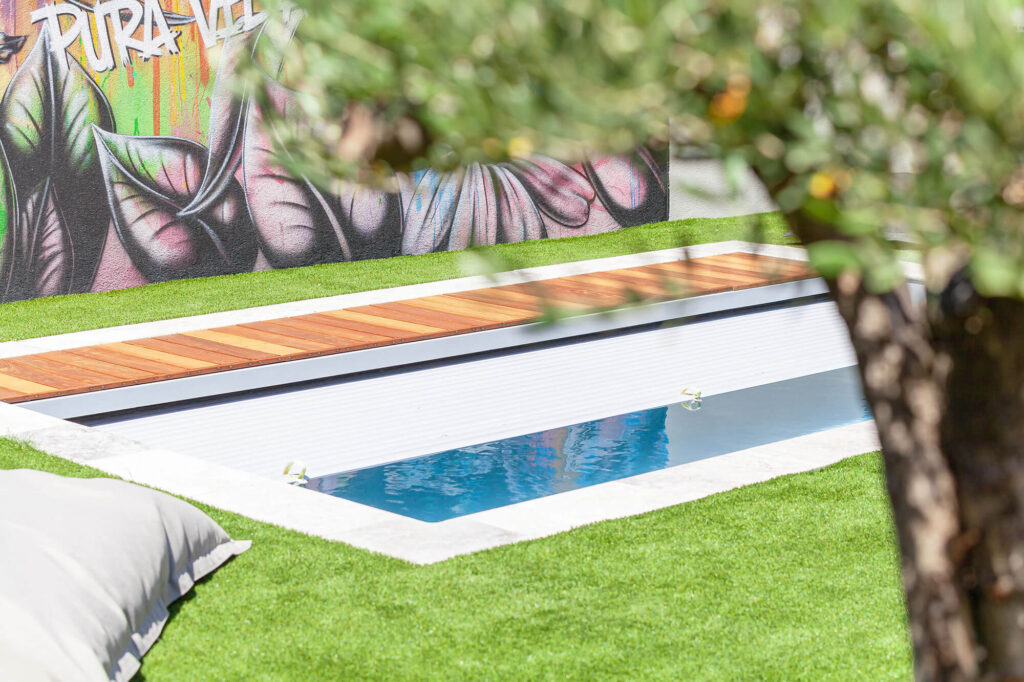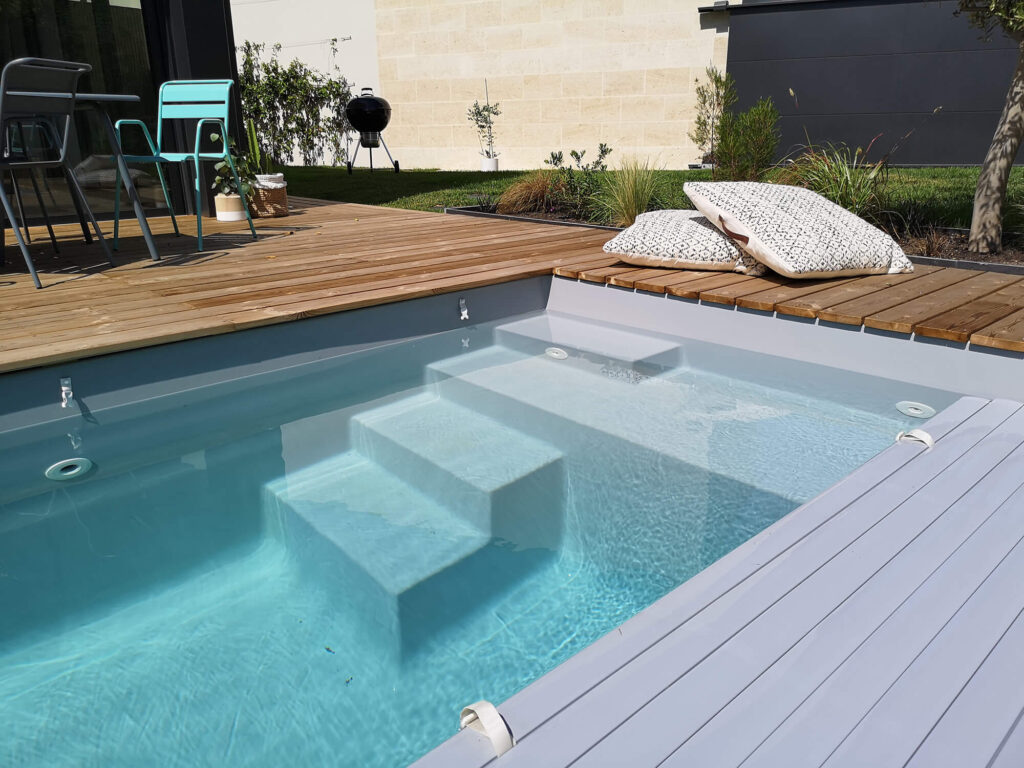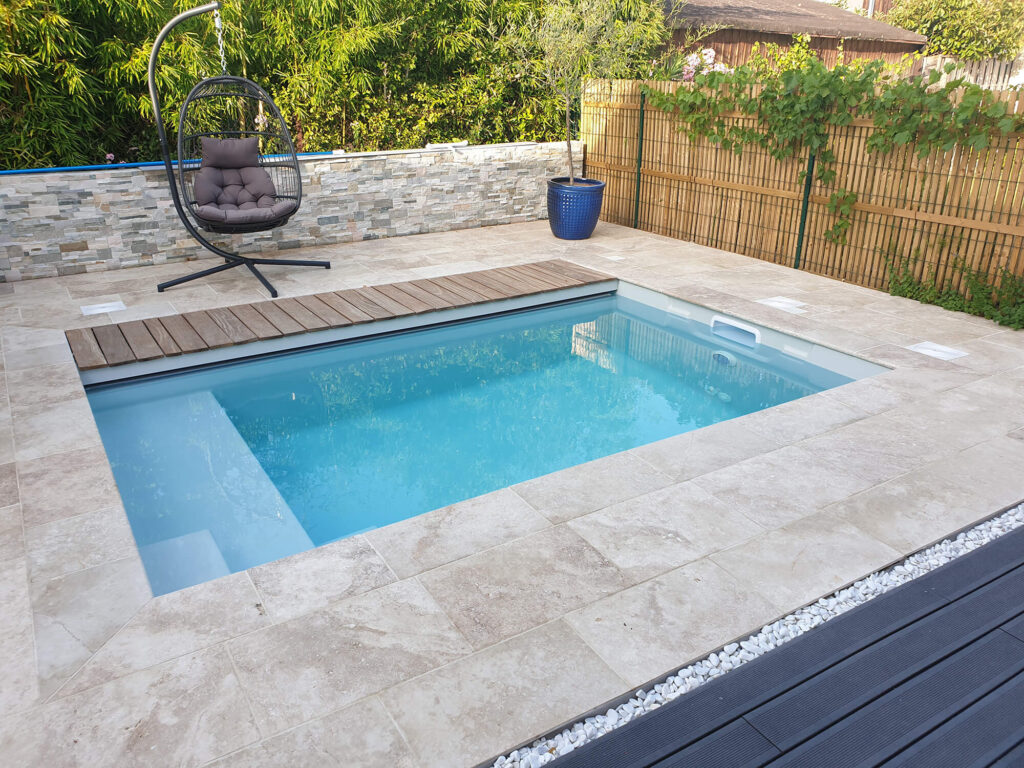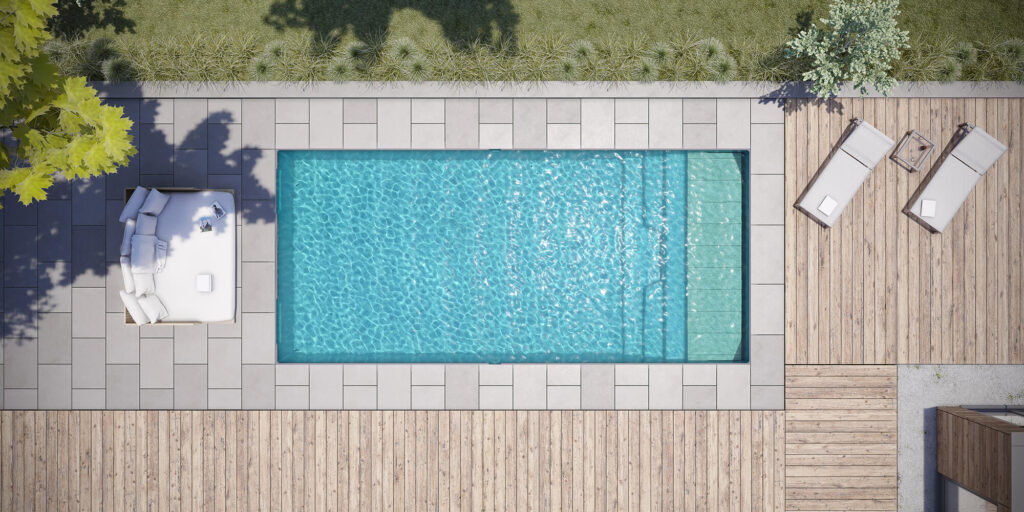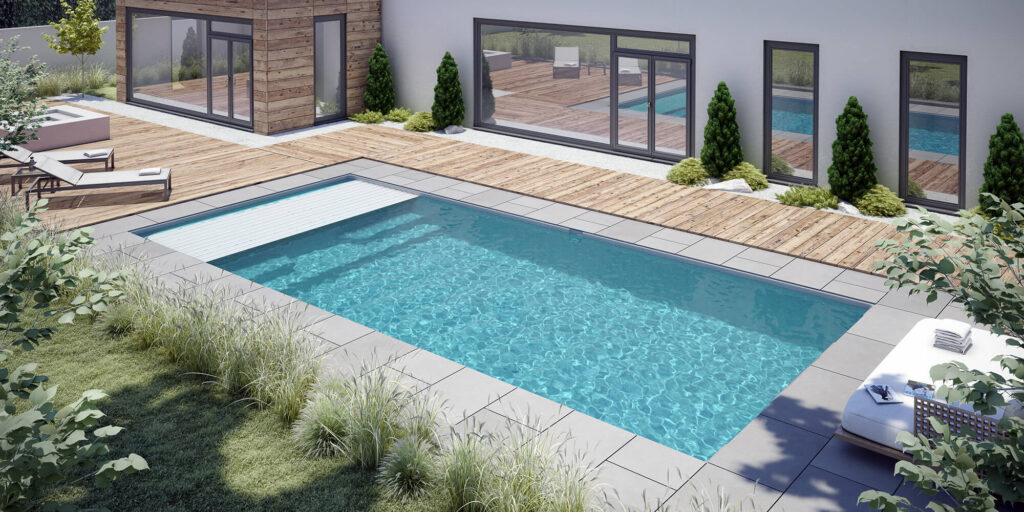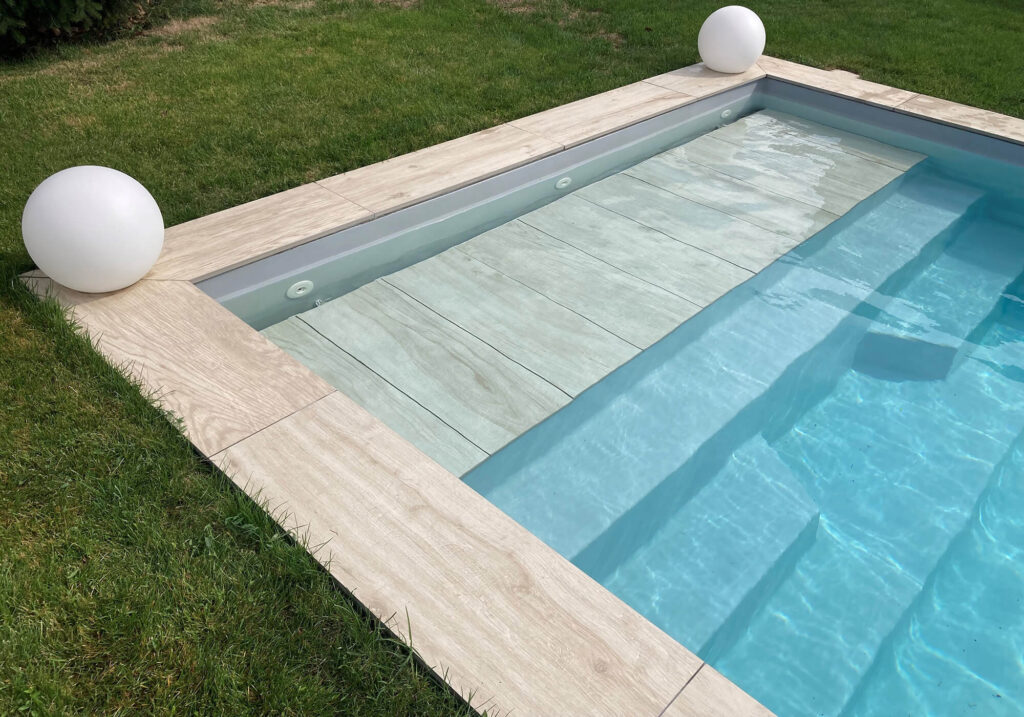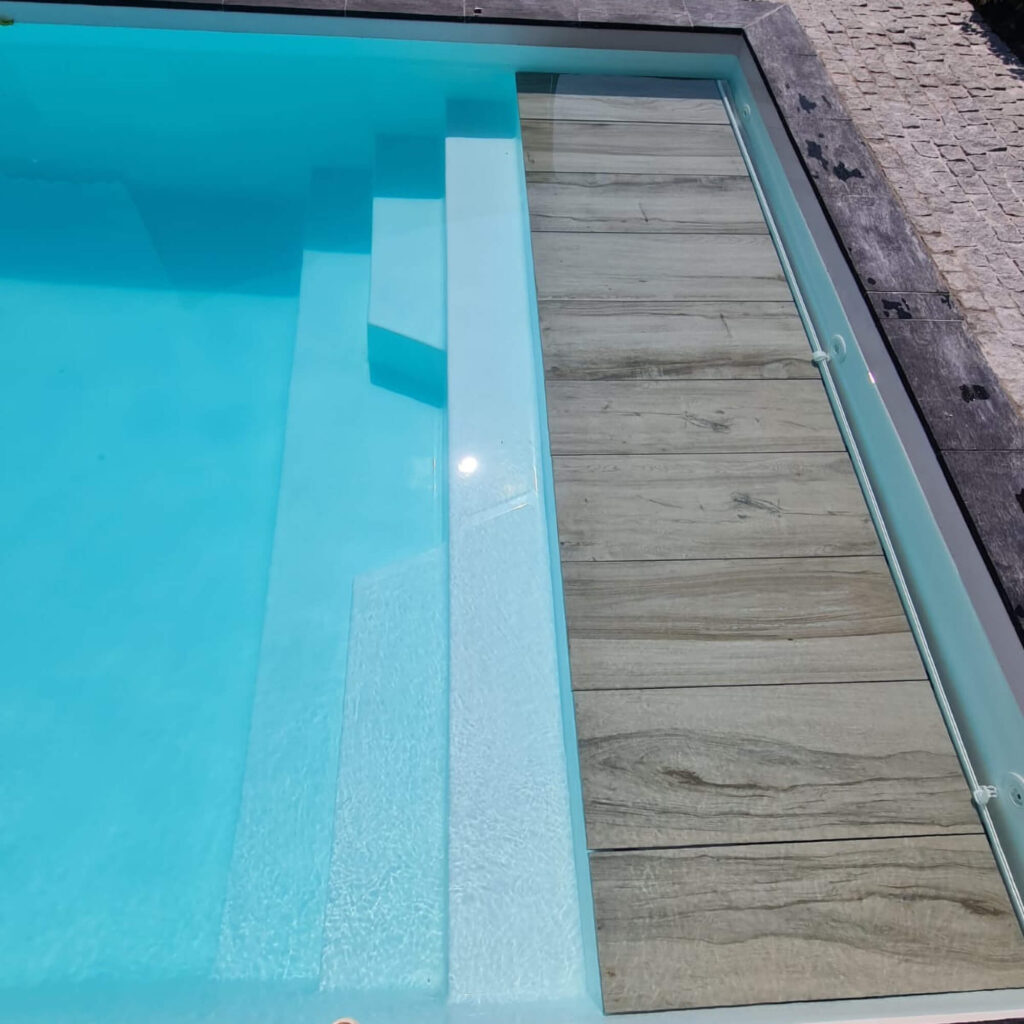Cela fait plusieurs années que vous avez opté pour un traitement au chlore pour l’entretien de votre piscine. Si cette solution est de loin la plus avantageuse en termes de coût et d’efficacité, elle n’en reste pas moins agressive… En effet, le chlore peut rendre l’eau de votre piscine odorante et irritante, au point de provoquer chez les baigneurs, des réactions allergiques.
Heureusement, des alternatives existent aujourd’hui pour éviter ces désagréments lors de vos baignades ; il s’agit de l’électrolyse au sel piscine. Plus respectueux de l’environnement et sans odeur de chlore, ce type de traitement a l’avantage de désinfecter naturellement l’eau de la piscine, sans risque d’allergies ou d’irritations.
Mais quelles sont les différences entre ces deux traitements ? Quelles sont les étapes à suivre pour passer sa piscine du chlore au sel ? Combien ça coûte ?
Découvrez tout ce que vous devez savoir dans les lignes qui suivent…
Avantages, inconvénients, prix… Pourquoi passer de l’eau chlorée au sel ?
Les avantages d’une piscine au sel
Pour les piscines avec un traitement, le chlore libre (qui contient le chlore actif) est responsable de la désinfection et de l’élimination des différents microorganismes. Pour les piscines au sel, le procédé n’est pas si différent… Une fois le dispositif installé, l’électrolyseur au sel transforme le sel en chlore, sans avoir besoin d’ajouter un quelconque produit chimique. Grâce à une faible quantité de sel (7 fois moins que l’eau de mer), les cellules d’électrolyse produisent du chlore (hypochlorite de sodium) et détruisent l’ensemble des matières organiques, bactéries, micro-organismes, algues et autres agents polluants. Une fois son action désinfectante terminée, le chlore va se recombiner automatiquement en sel sous l’effet de rayons UV. Et ainsi de suite…
Vous l’aurez compris, grâce au renouvellement partiel des ions chlorures, très peu de sel est consommé !
Efficace pour la désinfection des bassins, le traitement de l’eau par électrolyse au sel apporte également de nombreux bénéfices pour la peau. Contrairement aux autres produits chimiques, tels que le chlore non stabilisé, l’électrolyse ne dessèche pas la peau et préviendrait même l’apparition de mycoses sur la peau ! Cela provient du fait que l’eau de la piscine contient moins de chloramines, un composé chimique notamment responsable de cette odeur de chlore caractéristique que nous connaissons tous. Au même titre que l’eau de mer, les personnes qui souffrent de psoriasis peuvent constater une amélioration en passant d’un traitement chlore de piscine à un traitement au sel.
Autre avantage de la piscine au sel, et non des moindres : elle est plus écologique. En effet, lorsque vous devez évacuer l’eau de votre bassin, celle-ci s’évacue soit dans les sols de votre jardin, soit dans les canalisations. Contrairement au chlore ou au brome qui contiennent des substances chimiques polluantes, le sel de piscine ne nuit pas à l’environnement de votre maison et du voisinage.
Les inconvénients d’une piscine au sel
Côté inconvénient, les propriétaires de piscine constatent que le traitement au sel a tendance à faire grimper le taux de pH. Pour éviter les mauvaises surprises, il convient donc d’ajuster régulièrement le niveau de pH ou d’installer un régulateur de pH. De plus, en raison du caractère corrosif du sel, ce type de traitement nécessite de laver fréquemment son électrolyseur au sel, au risque de l’endommager.
Coût : passage piscine chlore au sel, qu’en est-il ?
Le prix représente également un frein pour passer d’un traitement au chlore à l’électrolyse au sel. En effet, le coût global d’une piscine au sel est en général plus important que les bassins traités au chlore ou les traitements au brome. Cela s’explique par le prix d’achat et d’installation de l’électrolyseur, qui se situe en moyenne aux alentours de 1 500€. En revanche, le coût de fonctionnement quotidien est plus avantageux ; à titre comparatif, vous pourrez trouver un sac de sel de 20 kg aux alentours de 10 €. Pour l’achat de chlore, il vous faudra débourser plus de 100 € pour la même quantité (le prix variant en fonction du distributeur et des caractéristiques techniques de votre bassin).
Comment passer sa piscine du chlore au sel ?
Pour réaliser correctement le passage du chlore à la désinfection par chlorure de sodium, quelques précautions sont à prendre. La transition devra être faite en plusieurs étapes.
Étape n°1 : Élimination du chlore dans l’eau
Avant de commencer le processus de transition, commencez par arrêter d’alimenter votre piscine en chlore et laissez tourner le système de filtration. Surveillez régulièrement le taux de chlore à l’aide de bandelettes ; une fois que celui-ci sera passé en dessous de la 1 ppm, vous pourrez passer à l’étape suivante.
Pour accélérer l’élimination du chlore, préférez la saison estivale lorsque le soleil est au beau fixe ou lors de fortes pluies.
Étape n°2 : Purge du circuit de filtration et installation de l’électrolyseur
Votre bassin est dépourvu de chlore ? Vous pouvez dès maintenant purger le circuit de filtration, démonter l’appareil de distribution du traitement (districhlore, chlorinateur…) et rétablir la connexion de la canalisation au niveau de l’appareil démonté.
Une fois cette étape terminée, vous pouvez installer l’électrolyseur de sel pour piscine. Pour un résultat optimal, n’hésitez pas à faire appel à un pisciniste pour cette étape.
Étape n°3 : Calcul de la quantité de sel nécessaire
Votre électrolyseur est correctement installé dans votre piscine, il ne vous reste plus qu’à calculer la quantité de sel nécessaire. Pour ce faire, vous avez besoin de connaître le volume d’eau de la piscine (A) et le grammage de fonctionnement de votre électrolyseur (B). Ensuite, la formule est simple : A x B = x kilos de sel
Ainsi, si votre piscine possède un volume de 60 mètres cubes et que votre électrolyseur fonctionne à 4 grammes de sel, alors il vous faudra 4 * 60 = 240 kilos de sel.
Mettez en route votre électrolyseur dès lors que la dissolution du sel s’est correctement effectuée dans l’eau.
Étape n°4 : Contrôle du taux de pH de l’eau
Comme évoqué précédemment, utiliser du sel pour le traitement de votre piscine peut augmenter le taux de pH de l’eau. Pour cette raison, vous devrez contrôler régulièrement le PH afin qu’il soit compris entre 7,2 et 7,4 ; pour plus de facilité, Aboral vous recommande d’installer un régulateur de pH, capable de détecter et de gérer en toute autonomie les variations de pH.
Peut-on mettre du chlore choc dans une piscine au sel ?
La réponse est oui ! En effet, votre piscine utilise déjà une forme de chlore comme agent désinfectant, l’ajout d’un traitement de choc à base de chlore n’aura donc pas d’impact sur votre piscine au sel. Pour ce faire, ajoutez le chlore en galets ou en granulés en vous référant au volume de votre piscine.
N’oubliez pas d’ajouter un produit anti-algues et de filtrer votre piscine pour éliminer totalement les algues et retrouver une qualité de l’eau optimale.
Vous avez désormais toutes les informations nécessaires pour changer le traitement de votre piscine et profiter de vos baignades avec plus de confort ! Pour vous aider dans votre décision, n’hésitez pas à faire appel à notre équipe d’experts. Nous sommes à votre disposition pour toutes informations complémentaires qui vous seraient nécessaires !
Configurez votre piscine en ligne Revenir à toute l'actualité

